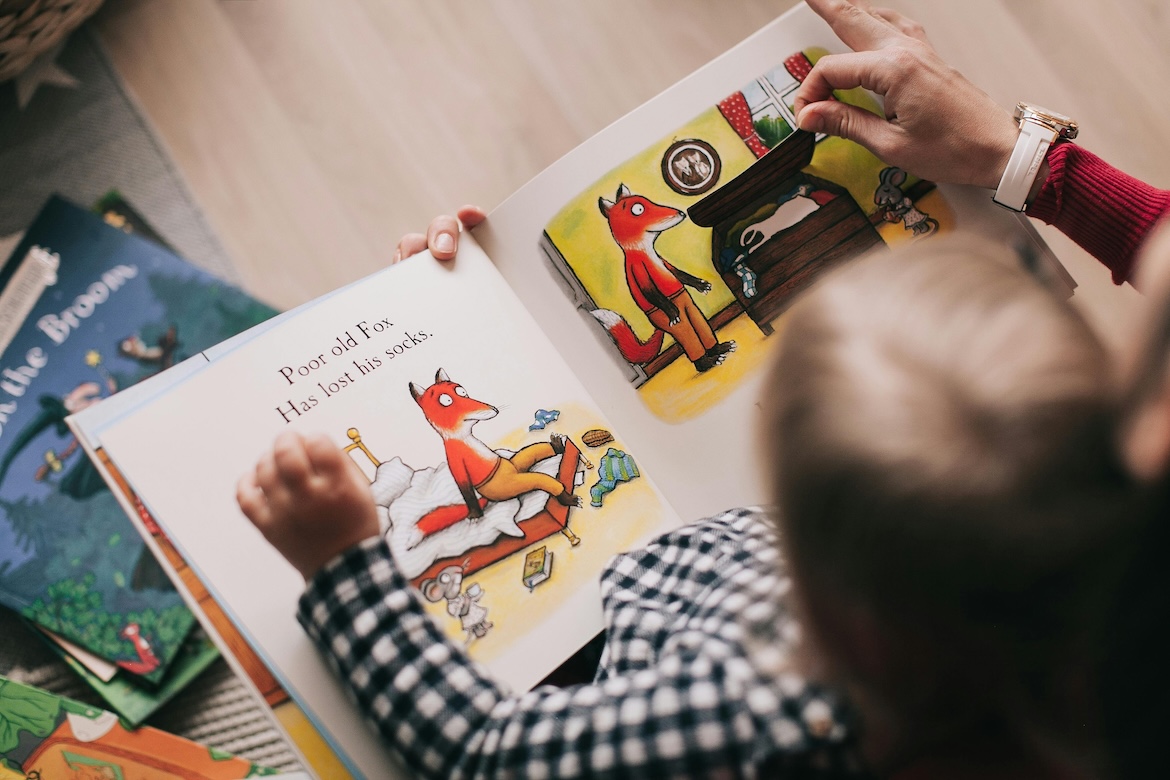By Kylee Harris
Early reading ability is widely regarded as one of the strongest predictors of later academic performance, including in subjects such as math and science. For instance, one study found that students who reached Level 5 (reading words in context) by the end of 1st grade had roughly a 50% chance of being proficient on NAEP’s 8th-grade reading assessment. In contrast, students starting school without a sound knowledge of the alphabet or phonological awareness by the end of Grade 1 were very likely to score below the NAEP Basic level in Grade 4. The findings are a reminder of the importance of fostering a love of reading in young children. The good news is that there are many tried-and-tested strategies parents can use to achieve this goal while spending quality time with their children.
Making Reading Part of Your Daily Routine
Aim to make reading a part of your child’s daily routine. You can choose specific moments such as after they do their homework, after dinner, or just before bed. On weekends, reading can be part of your usual play time together. You can up the fun factor by playing rhyming games, completing word puzzles, or playing word-building games like Scrabble. Your child doesn’t exclusively have to focus on the written word. For instance, they can create their own story by looking at images or retell a story they have learned by memory.
Building a Rich Home Literacy Environment
To get your children interested in books, create a home library with a wide array of books for young children, making sure to include both fiction and non-fiction works. Aim to prioritise reading material (including magazines and pop-up books) that align with your child’s interests, whether these be outer space, dinosaurs, flowers, or superheroes. Model good readership by reading a wide array of books. Your children are likely to follow suit if their parents utilise reading as a form of entertainment and relaxation. Finally, consider creating a quiet, aesthetically pleasing reading space where your children can disconnect and concentrate on their favourite books. Features that can make this space more appealing include “reading tents”, pretty fairy lights, beanbags, and soft cushions.
Connecting with Your Kids While You Read
Reading provides an excellent opportunity for parents and kids to spend quality time together. Encourage your kids to look forward to these moments by making reading an interactive and entertaining experience. For instance, you can bring stories to life by using funny voices for characters, asking questions, predicting what will happen next, and discussing the plot and characters. For younger readers, you can try techniques like repeated reading, in which you read a sentence out loud then your child does the same. For these reading sessions, allow your child to choose the books covered.
Harnessing the Power of Technology
There is a myriad of fantastic online resources that can help kids get excited about reading. Books, informative articles, and interactive stories can be found on apps, e-books, and online platforms. Just a few apps for younger children include Duolingo ABC (which focuses on phonics and letter sounds), Teach Your Monster to Read (featuring systematic phonics learning through games), and Endless Alphabet (with stunning animations and cute characters). For kids struggling with reading, audiobooks can capture their interest, helping them enjoy listening to stories without the stress of decoding letters. As your child makes efforts to boost their vocabulary, congratulate them on their progress. Of course, technology should not be the only means of engaging with books. You can show them the magic of holding different books in their hands by purchasing books (new or second-hand) and by visiting your local library. When you visit, ask librarians about any activities catered to kids. Libraries often have author readings and theatrical representations that capture kids’ imaginations.
If you have young children, you may wonder how to encourage them to become more interested in reading. Start by giving them access to a wide range of materials, both fiction and non-fiction. Design a beautiful space that appeals to their imagination and helps them relax. Read alongside them, making sessions as interactive as possible. Finally, download fun apps and play games that make the reading experience as engaging as possible.
Kylee Harris is an educator who has taught in elementary schools in Singapore and Hong Kong for 5 years. She lives in Florida and continues to teach life skills to young adults in her community











